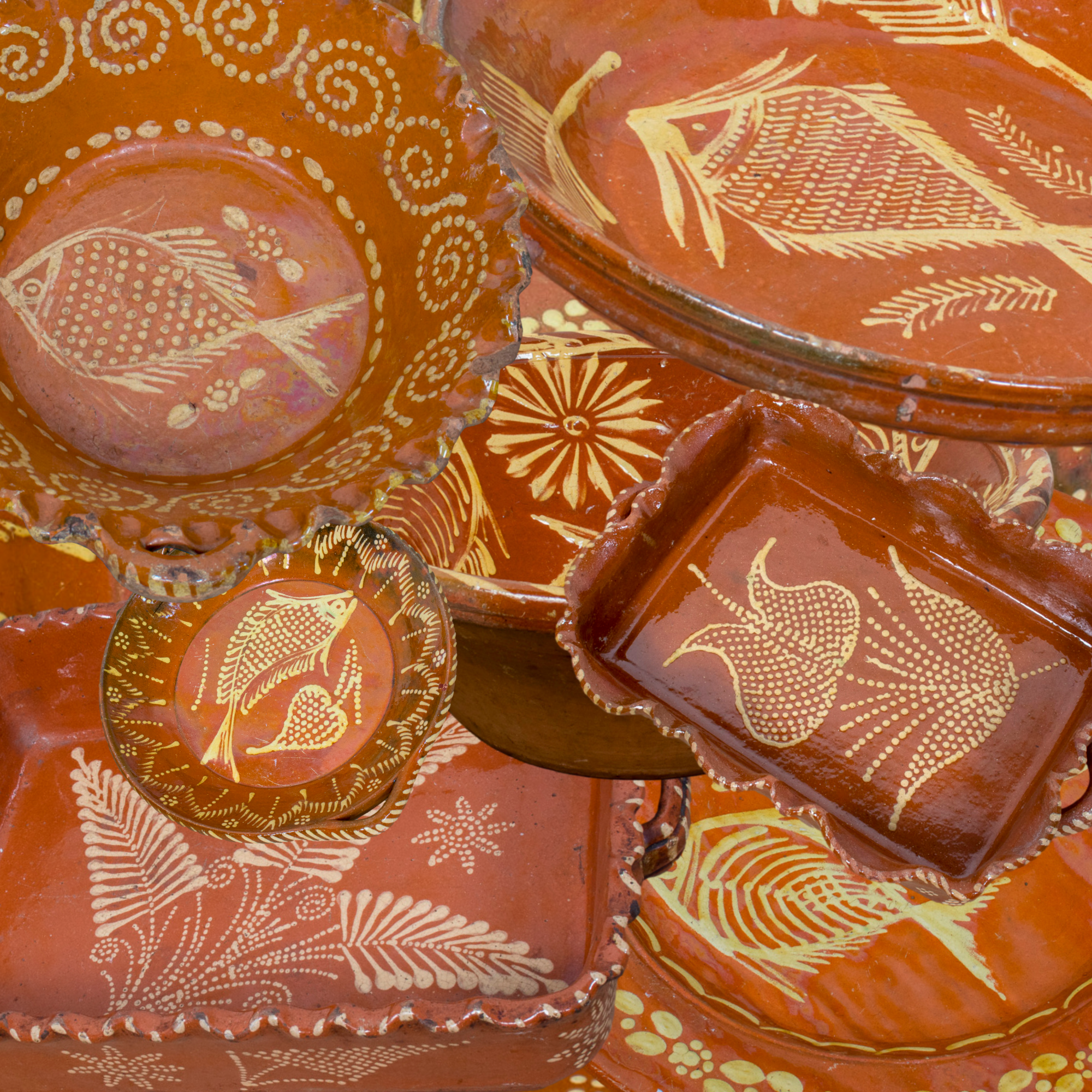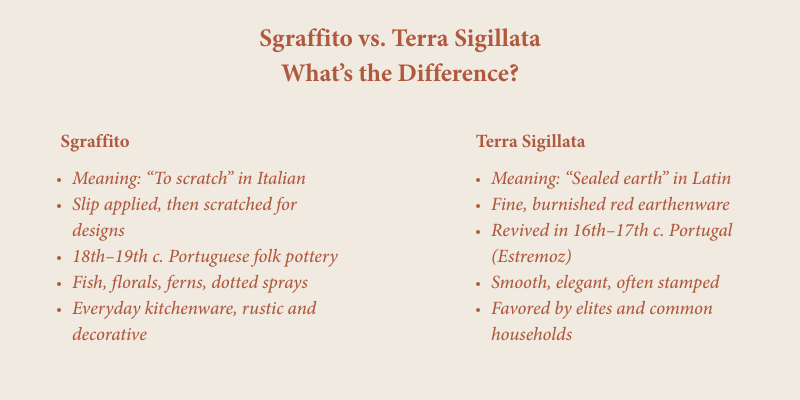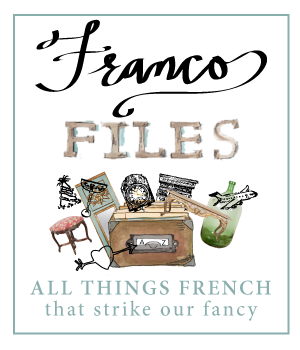
Falling for Folk Art: Portuguese Red Slipware

A vibrant collection of 19th century Portuguese red slipware, where hand-incised fish, florals, and geometric motifs bring rustic charm to timeless terracotta.
A Tradition with Ancient Roots
What is Sgraffito?

Why Collect Portuguese Red Slipware?
Slip Into Style
From Kitchen to Collection
À Bientôt!


Browse the Full Series
See all Word of the Week posts →
See all Word of the Week posts →

Browse the Full Series
See all Double Vision posts →
See all Double Vision posts →












